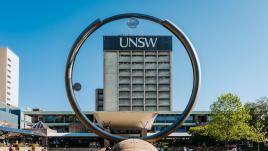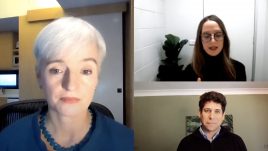Why cities are the best (and worst) places to be during an outbreak
Tourism, transport networks and high density living make cities hotspots for disease. As one of the first truly global disasters of the 21st century, the COVID-19 pandemic is a major test of how modern cities cope with widespread outbreaks.
With COVID-19 now present in almost every country on the planet, we’re seeing the most significant outbreaks in dense metropolises such as New York, London, Madrid and - closer to home - Sydney. Nonetheless, Professor David Sanderson, inaugural Judith Neilson Chair in Humanitarian Architecture at UNSW Built Environment, says cities are sometimes the best places to be during an outbreak.
City living: Higher risks, bigger benefits
COVID-19 originated in Wuhan, China - a city of more than 11 million people - and has since thrived around the world in dense urban centres. Infection rates have rocketed, buoyed by transport networks and shared infrastructure.
However, while cities are an ideal environment for diseases to spread, they’re usually also the most well-equipped areas to cope with suppression strategies. In a city, good infrastructure and conveniences like food delivery can make life under lockdown a lot more manageable than in more remote areas.
“You can be locked down [in a city] and – if you can afford it – people will come and serve stuff to you,” says Professor Sanderson. “If you’re dispersed, you have a better chance of being isolated, but on the flip side, you also have less chance of being helped. Services are where cities are, and that’s a benefit.”
This established infrastructure and availability of services means it’s much easier for city dwellers to take that all-important measure – stay at home.
“Staying at home is very powerful. [You can] save the world by not going out,” adds Professor Sanderson. He also says that architecture can play an important role in creating cities better able to cope with future outbreaks.
“Better design can impact health outcomes profoundly, saving lives. [Architects can influence] how space is used, how buildings can be ventilated through simple attention to form.”
Managing the risks for vulnerable communities
Of course, living through a pandemic looks very different within other high-density settings. While most Australians can isolate in secure homes and access essentials during the pandemic, the challenge is much greater for those living in prisons and detention centres.
Settings like these represent “density and vulnerability combined,” says Professor Sanderson. In these environments, he says, minimising density is key. “Single cells and less overcrowding are big factors – not just for pandemics but also for a humane detention system.”
In other parts of the world, Professor Sanderson says the risk is most extreme for those living in slums.
“History has shown us that disasters, including coronavirus, are unfair. Anyone can catch it, but if you're poorer or more vulnerable or weaker, you're more likely to die from it," he says. “Nearly 900 million people live in slums and that's almost certainly going to double by 2050. Little has changed that cold reality for decades. Where governance is weak, corruption is high and where systems are dysfunctional…that's where the true horror lies.
According to Professor Sanderson, bringing meaningful urban planning to these areas is “the single greatest challenge.”
Looking to the post-pandemic future
The most important way we can respond to this pandemic is to learn from it, says Professor Sanderson.
“We are, on one level, very good at learning from things. But when it comes to vulnerability, we're not. We rebuild after earthquakes in the worst places and build shabby houses that will fall down in the next disaster,” he says.
“This all goes to politicians and how they make their decisions … do you want to stockpile a billion face masks when poverty is killing more people? These are the trade-offs. But this is a wake-up call that we can't forget.”
He also thinks there is a chance that COVID-19 could have a permanent impact on our city skylines.
“One thing we’re now learning is that [many people] can work from home … If you can do [your job] in your jim jams and actually stay home … I think there will be a question mark once we realise we don’t have to do those dreadful commutes, and a long-term discussion to be had around skyscrapers," he adds.
"The big challenge though is to get serious about the one billion and counting people living in slums, and how that can be tackled to prevent a catastrophe."








